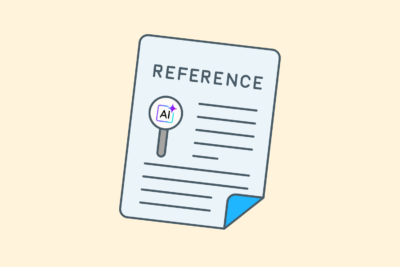Tools to help you apply GEO in your content strategy

Generative Engine Optimization (GEO) requires a different way of thinking than traditional SEO. Classic SEO focuses on Google rankings, GEO on visibility in AI answers from tools like ChatGPT, Gemini, Claude and Perplexity. To do that well, I use a selection of tools that help me analyze, structure and optimize content for LLMs (Large Language Models).
I share the tools I use most often within GEO projects, and how they contribute to a future-proof content strategy.
1. Perplexity.ai
Perplexity is not only an AI tool, but also an excellent indicator of content that performs well in a generative environment. This AI search engine actively shows sources in its answers. This gives me insight into which pages and sites are used as input for AI answers.
I use Perplexity to research:
- What content in my niche gets cited
- How questions are formulated by users
- Whether my own pages are already mentioned or displayed
Based on that information, I optimize content in terms of structure, tone and entities. (1)
2. AlsoAsked and AnswerThePublic
GEO requires content written around natural questions. Tools like AlsoAsked and AnswerThePublic collect these questions from search behavior and structure them visually. I use this input when creating question-based content blocks.
Benefits:
- I get instant insight into real search intent
- I can organize pages logically with question-answer structure
- I discover long-tail questions that are perfect for conversational SEO
Especially when creating FAQ-like sections, AlsoAsked and AnswerThePublic are indispensable.
3. InLinks
InLinks is a semantic SEO tool that lends itself very well to GEO. It analyzes content for entities and relationships, and helps me build content clusters with a strong semantic structure. After all, AI systems understand content based on concepts, not individual words.
I use InLinks for:
- Entity-based internal linking strategy
- Building topical authority within a theme
- Evaluating how well a page covers a topic
This helps AI models understand the context of my website faster and categorize my content correctly.
4. Schema Markup Generator (Merkle or RankRanger).
Structured data supports not only SEO, but also GEO. I use structured data to make it explicitly clear what the content is about, who the author is, and how the page relates to other content on the site. Tools like Merkle’s Schema Markup Generator help me generate correct JSON-LD structures.
Structured data has the following applications:
- Article, FAQPage and Person schedules
- Adding about, author, keywords and datePublished
- Testing via Google’s Rich Results Test or the Schema.org validator
By applying structured data strategically, I increase the likelihood that content is understandable and usable for LLMs. (2)
Getting started with SEO? Feel free to get in touch.

5. Poe.com (Anthropic, GPT-4o, Claude)
Poe provides access to multiple LLMs within a single interface. I use Poe to test how different AI models respond to content. With that, I see:
- What questions are answered using my texts as a basis
- How models generate summaries based on my input
- What terms and structure are adopted
Based on these experiments, I modify content to be more model-friendly without losing readability for humans.
6. Google Search Console and Bing Webmaster Tools
Although GEO takes place partly outside Google, Search Console is still important. It provides insight into:
- Which pages perform well on demand-oriented searches
- Whether structured data is picked up correctly
- Whether pages are indexed and generating traffic
I use this data to determine which content functions well within classic SEO as well as has potential for generative search engines.
7. ChatGPT Advanced Data Analysis.
Through GPT-4 with the Advanced Data Analysis feature, I analyze large amounts of content, and I cluster and rewrite it for AI optimization. Think of rewriting existing content to demand-driven formats, or analyzing entity coverage within a theme.
Among other things, I use this for:
- Rewriting content to a better query structure
- Evaluating whether a text aligns well with E-E-A-T principles
- Checking that the writing style used reads naturally for models as well as humans
Use a combination of tools and editorial strategy
Tools help me, but they do not replace strategic thinking. The core of GEO lies in:
- Understanding how AI systems process content
- Writing in natural language, focused on questions
- Building semantically strong websites with authority and context
I use various tools to support and monitor that process, not to take over.
Summary
GEO is not a trend, but a structural shift in how people search and how systems generate answers. With the right tools, you capitalize on that today. With insights into entities, queries and citations, you write content that not only gets found, but also serves as a source in AI answers.
Want to know if your content is ready for GEO yet? Or are you looking for help implementing an AI-resistant content strategy with the right tools? Feel free to send me a message. I’d be happy to help you further.
| # | Source | Publication | Retrieved | Source last verified | Source URL |
|---|---|---|---|---|---|
| 1 | The 10 Most Mentioned Domains for ChatGPT, Perplexity, and AI Overviews Across 78.6M Searches (SEO Blog By Ahrefs) | 12/06/2025 | 12/06/2025 | 14/11/2025 | https://ahrefs.com/blog/.. |
| 2 | What Is Schema Markup? & How to Add It to Your Site (Semrush Blog) | 12/03/2025 | 12/03/2025 | 01/11/2025 | https://www.semrush.com/.. |
- Stox, P. (12/06/2025). The 10 Most Mentioned Domains for ChatGPT, Perplexity, and AI Overviews Across 78.6M Searches. SEO Blog By Ahrefs. Retrieved 12/06/2025, from https://ahrefs.com/blog/top-10-most-cited-domains-ai-assistants/
- Paruch, Z., & Pol, T. (12/03/2025). What Is Schema Markup? & How to Add It to Your Site. Semrush Blog. Retrieved 12/03/2025, from https://www.semrush.com/blog/schema-markup/






